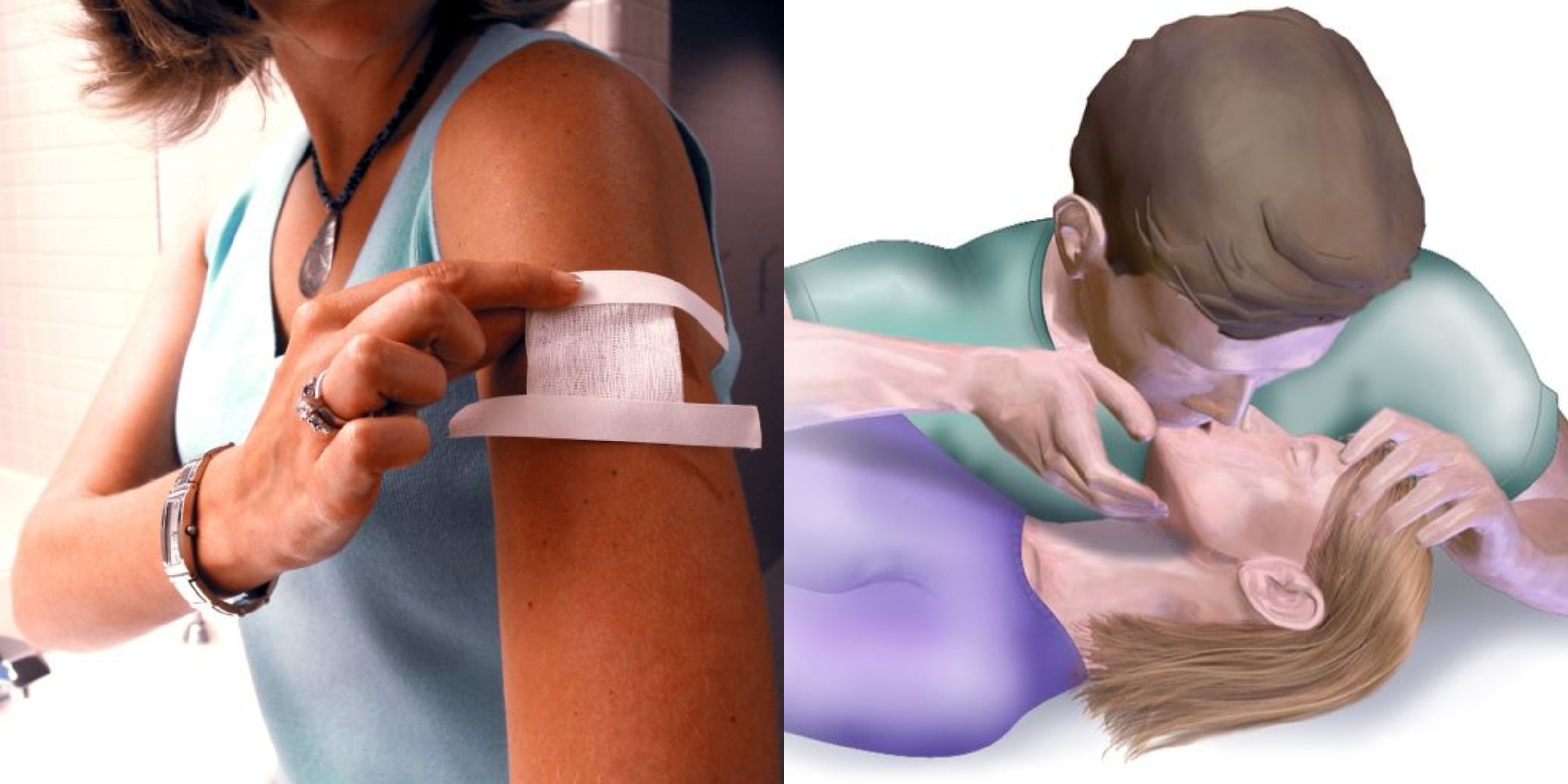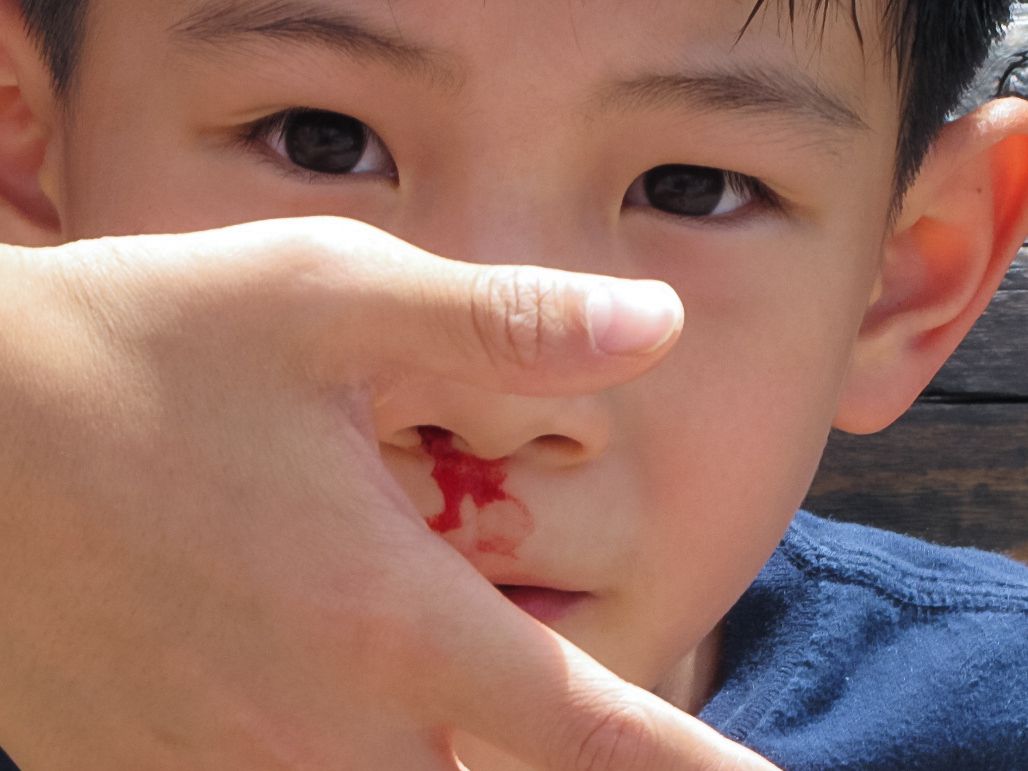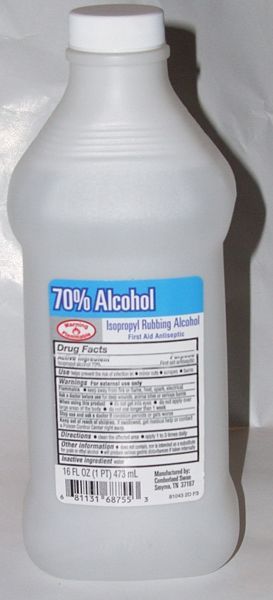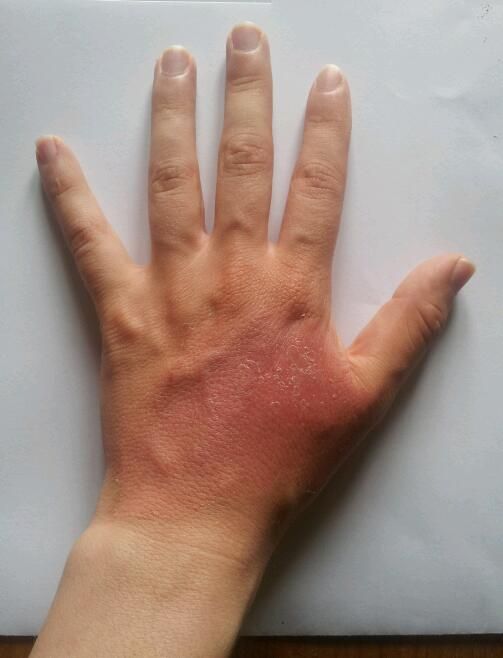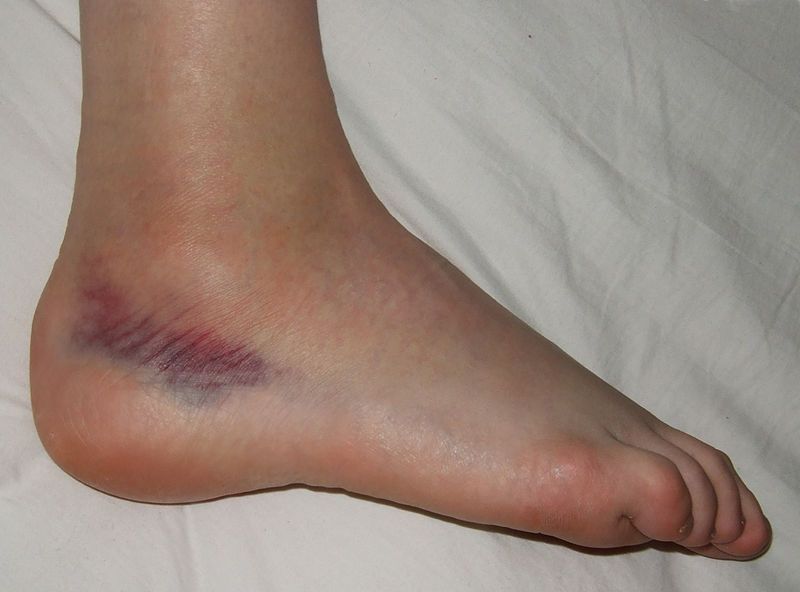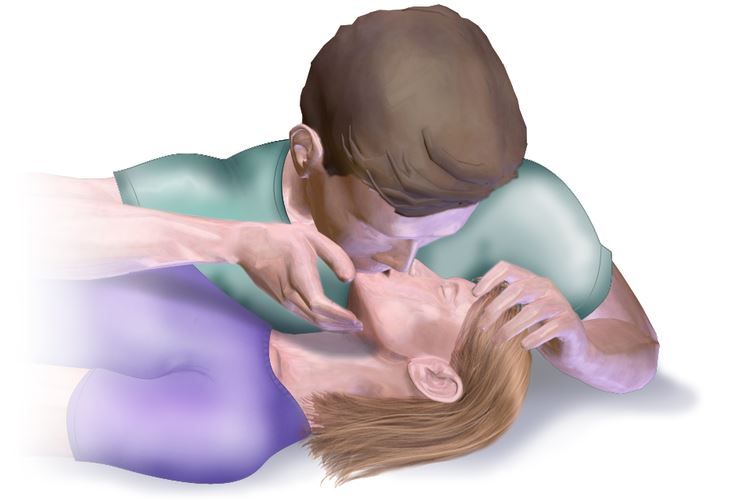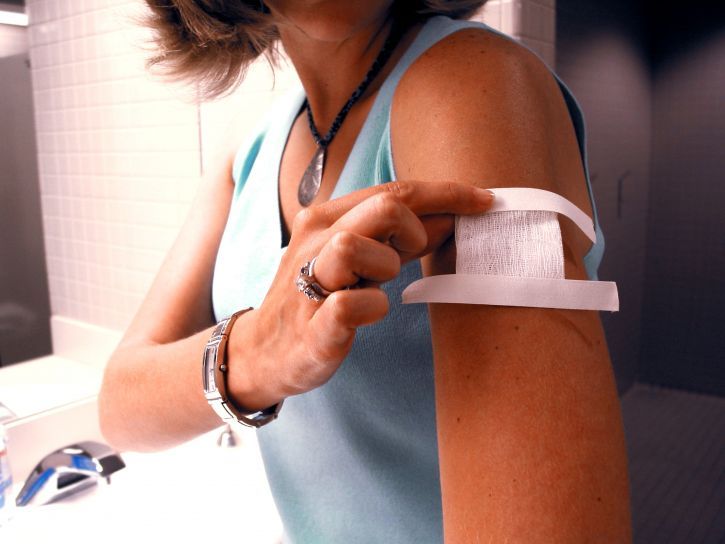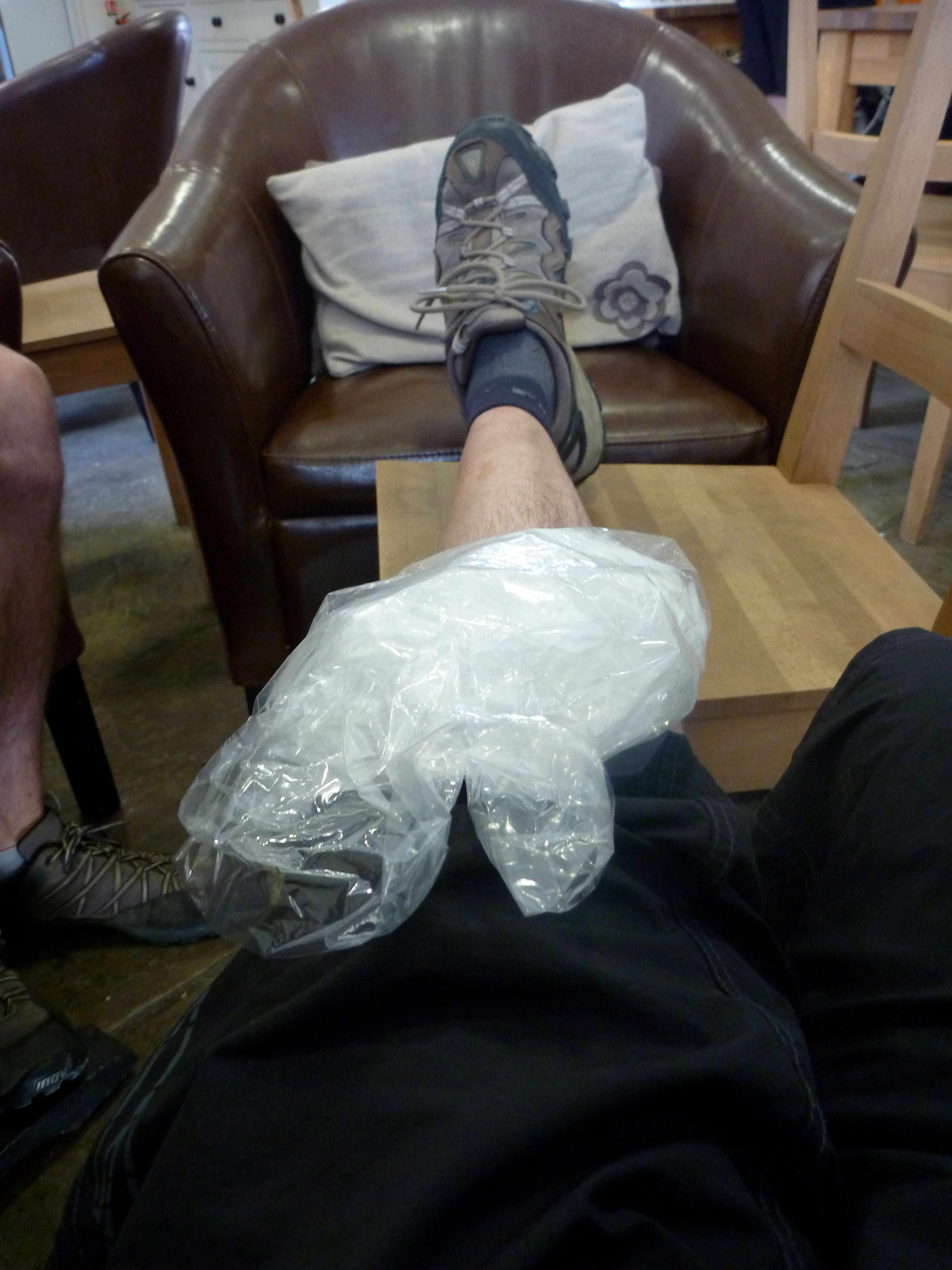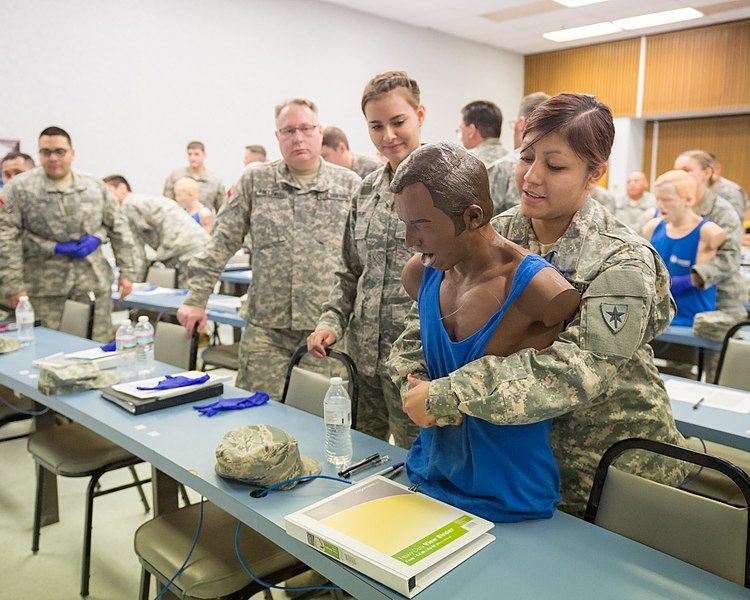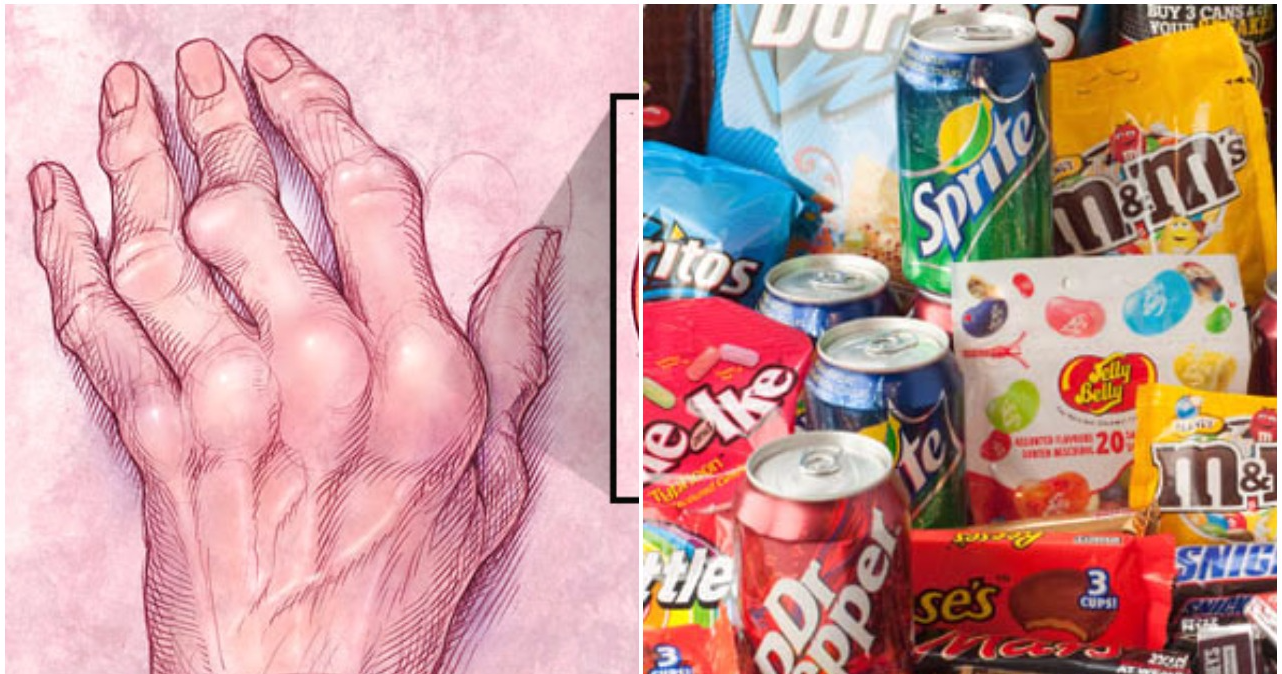Life is unpredictable, so you never know when your first aid skills will be put to the test.
Your knowledge can come in handy when treating minor everyday injuries to major emergencies.
Still, no matter how confident you are in your abilities, there are some things that you probably do wrong.
Even if you have previously received professional training, the guidelines are being updated constantly, and you may be missing some crucial new information.
Here are 10 common first aid mistakes you're making that only make the situation worse:
1. Tilting your head to stop a nosebleed
We've all been told to lean back and tilt our heads anytime we have a bloody nose.
We never question it because it makes sense to not let the blood continue dripping all over the place, but here's the thing: you should never ever do that again, according to several health care experts.
All you're doing when you tilt your head back is allowing the blood to drain back into your throat.
"You drink blood, you throw up, you don't know how much you're bleeding and most important, you're not stopping the bleeding, " says Michael Van Rooyen, MD, professor of emergency medicine at Harvard Medical School.
Do this instead: Don't move your head at all; Keep it in a neutral position then use your fingers to pinch your nose shut for about 15 minutes.
You can keep breathing through your mouth, but if that's difficult, place your fingers just below the bridge of the nose so you can have some airflow.
Since most nose bleeds are harmless, the bleeding should stop after the time is up. If it doesn't, continue applying direct pressure for another 15 minutes.
If it doesn't clear up after 30 minutes, it's time to go see a doctor.
2. Disinfecting wounds with rubbing alcohol
I always thought that putting rubbing alcohol or hydrogen peroxide on a cut or scrape would kill all the bacteria on it. After all, when something stings a lot it means it's working, right?
Turns out, I've been wrong all along, but I'm not the only one.
Rubbing alcohol, iodine, betadine, and hydrogen peroxides are all antiseptics therefore they don't actually disinfect a wound, and can actually cause more harm.
When you apply these solutions to an injury, they kill your body's healthy tissues and fibroblasts, which are the cells that help wounds heal.
Do this instead: Water is your friend when it comes to cleaning minor cuts and scrapes, says the Mayo Clinic.
Hold the injured area under running water to get rid of bacteria and debris from it, then wash around it with soap. Be careful not to get any of the soap in the wound.
If there's still any dirt left, remove it with a pair of clean tweezers.
Use antibiotic ointments like Polysporin (if not allergic) to create a protective barrier against bacteria, but keep in mind that there is really no scientific data that proves this will prevent an infection from occurring.
3. Not treating a burn long enough
There are plenty of old wives' tales on how one should go about treating a burn.
Some people are convinced that using toothpaste or ice will bring your relief, others swear by butter and pickle juice.
But if you were to speak to a doctor, they would recommend simply using water.
H2O will soothe the burn better than anything else, but there's a specific way to do it.
Do this instead: The best way to treat burned skin is to run it under cool (not cold) water as soon as the injury happens.
"The heat from a burn travels deep into your skin, where it can continue to destroy tissue even if you've cooled the surface," says Jeffrey Pellegrino of the American Red Cross. "You need the cold to soak in to prevent further damage."
So don't place the affected area under water for just a few seconds or in intervals, you need to do it for at least 10 to 20 minutes.
If you notice that the burn covers a large area, and the skin appears leathery, charred, or have brown and white patches, then you're most likely dealing with a severe injury that needs immediate professional care.
4. Putting heat on a sprain
I've only ever sprained an ankle, and I remember my coach asking another player to run and grab the heat pack. That was a big mistake.
It's common for people to apply heat to a sprain, but apparently that only makes it worse.
"People think that they should use a warm cloth and switch between applying warmth and cold to help pulled muscles," says Robert Seitz from the American Red Cross Scientific Advisory Council. "But a warm cloth could dilate blood vessels so that blood rushes into the area and increases swelling."
Do this instead: Always apply a cold compress first. You should do it for 20 minutes on followed by 20 minutes off for at least one hour.
Also, make sure that you stay immobile while you treat the injury. Contrary to popular belief, elevation will only bring you temporary relief, but doesn't do anything to help the healing process.
Seitz reminds us that sprains can be more severe than fractures "because tendons and ligaments are involved," so if the pain persists then you should get the injury checked.
5. Performing CPR using mouth-to-mouth
Unless you've been keeping up with the the American Heart Association (AHA) or have spoken to a professional, chances are you aren't aware of the change made to the guidelines in 2008.
According to the AHA's updated cardiopulmonary resuscitation (CPR) recommendations, if an adult collapses, you no longer have to worry about your mouth coming into contact with theirs.
"Hands-Only" CPR is what you should be providing when a person becomes unconscious.
Do this instead: In the case of an emergency where you have to administer CPR on an adult, continuously push hard and fast in the middle of the person's chest until paramedics arrive.
The AHA reports that this method "has been shown to be as effective as conventional CPR with mouth-to-mouth breaths in the first few minutes of an out-of-hospital sudden cardiac arrest."
Mouth-to-mouth is still the best way to resuscitate children, infants, or drowning victims.
Even if you aren't trained, Dr. Michael R. Sayre, lead author of the AHA recommendations, says that you should provide CPR anyway because this will double the person's survival chances.
6. Giving a dehydrated person soda
You've heard it a million times, but health and nutrition experts aren't kidding when they say that most people don't drink enough water.
This is why when the warmer months roll around, many of us are at a higher risk of suffering from dehydration or a heat stroke.
It's important to know what you can do when if you ever find yourself in a situation where you have to help someone who is parched.
The biggest no-no is giving them soda to drink. The caffeine in the fizzy beverage will only worsen their condition.
Do this instead: To help replenish a person's fluids, give them water to drink. Electrolyte replacement drinks like Gatorade are also fine.
According to Seitz, alternating between "four ounces of water and four ounces of Gatorade every 15 minutes while resting somewhere cool," will do the trick.
There should be an improvement in the person's condition within 30 minutes, otherwise call 911.
7. Removing a soaked gauze from the wound
It's common practice to simply remove a gauze pad and replace with a new one whenever it gets soaked with blood.
If you've done this in the past, you should never do it again.
When you take off an old gauze from a bleeding wound, you're also removing the clots that rose to the surface to stop the bleeding. This means that the wound could start bleeding all over again.
Do this instead: When a gauze gets too soaked, just add a fresh pad on top. The new pad will soak up the excess blood, and wound will remain free from irritation.
If you absolutely must remove the first layer of gauze, then proceed with caution to make sure you're not reopening the wound by removing any scabbing that has already started to form.
If the gauze is stuck, The Doctors Book of Home Remedies suggests making a salt water solution using one teaspoon of table salt per gallon of water, then soaking the wound in it for a few minutes until it finally comes off.
Make sure you properly dry the affected area before you redress the wound.
8. Putting a pencil in a person's mouth to stop seizures
Even if you have never personally experienced a person having a seizure, you've probably heard someone say that placing an object like a pencil will keep them from biting or swallowing their tongue.
Firstly, it's physically impossible for a person to swallow their tongue, so you should never worry about that. What you should be concerned with is the fact that they could actually swallow the object that's been placed in their mouth.
Secondly, the person experiencing a seizure has a higher chance of having their airway blocked by the object in their mouth than biting their tongue.
Do this instead: Seizures can be terrifying to witness. During an episode, a person may shake uncontrollably, foam at the mouth, even turn blue, but unfortunately, there's not a whole lot you can do for them.
Just make sure the person isn't close to any danger, including sharp objects, glass, or heat, then call for back up just in case.
You could also roll them on their side to keep their airway clear until they come around.
9. Applying ice directly on a bruise
You're trying to get rid of that black and blue patch not make it worse, but by putting ice or a cold pack directly on the bruise, you could freeze the skin and trigger frostbite.
There have been many documented cases of people getting "ice burn" after they tried to treat an injury by applying ice for long periods of time on their skin.
Do this instead: If you need to use ice on an injury make sure to always have a layer between the ice and your skin. A towel or a material with similar thickness should be enough to protect the surface of your skin while keeping the muscle cool.
As mentioned earlier, a good rule of thumbs is to leave it on for 20 minutes then take a break for another 20 minutes.
Also, it's important to note that if someone ever loses a finger, you should never put in directly in ice.
Wrap the decapitated digit in a moist gauze, place it in the a Ziploc bag, before storing it in ice.
10. Doing the Heimlich maneuver on someone who is choking
We've all seen the Heimlich maneuver being administered.
Even if you've never actually witnessed it in real life, you have definitely seen the Mrs. Doubtfire scene where Robin Williams' character had to perform the maneuver on his ex-wife's boyfriend, Staurt.
But just like the film, this first aid technique is a thing of the past.
The Red Cross updated their guidelines for choking emergencies, and the Heimlech is only a small part of it.
Do this instead: Instead of using both your hands to perform abdominal thrusts, you should stand behind the person who's choking, make them lean forward, then hit them between the shoulders five times with the heel of your hand.
If the object doesn't come out, stand them up and place your fist just above their belly button. Then place your other hand over your fist and pull in up sharply five times.
Continue alternating between the five whacks and five thrusts until the object is dislodged and the person is able to breathe again.
Have you made these mistakes in the past? Let us know in the comments!
